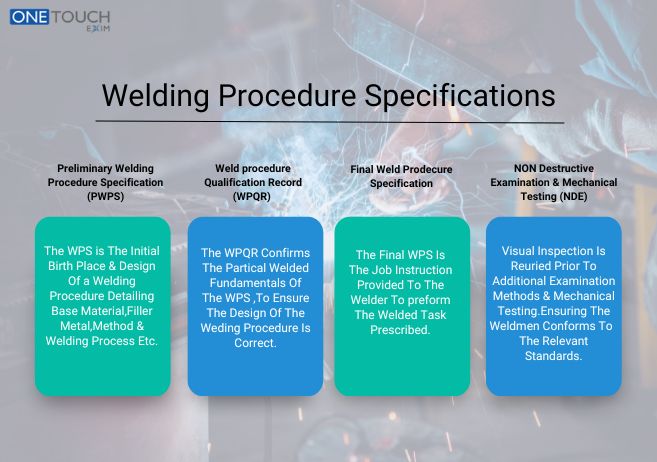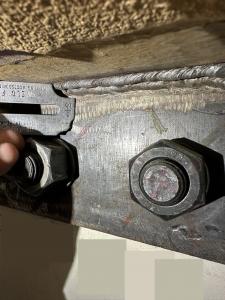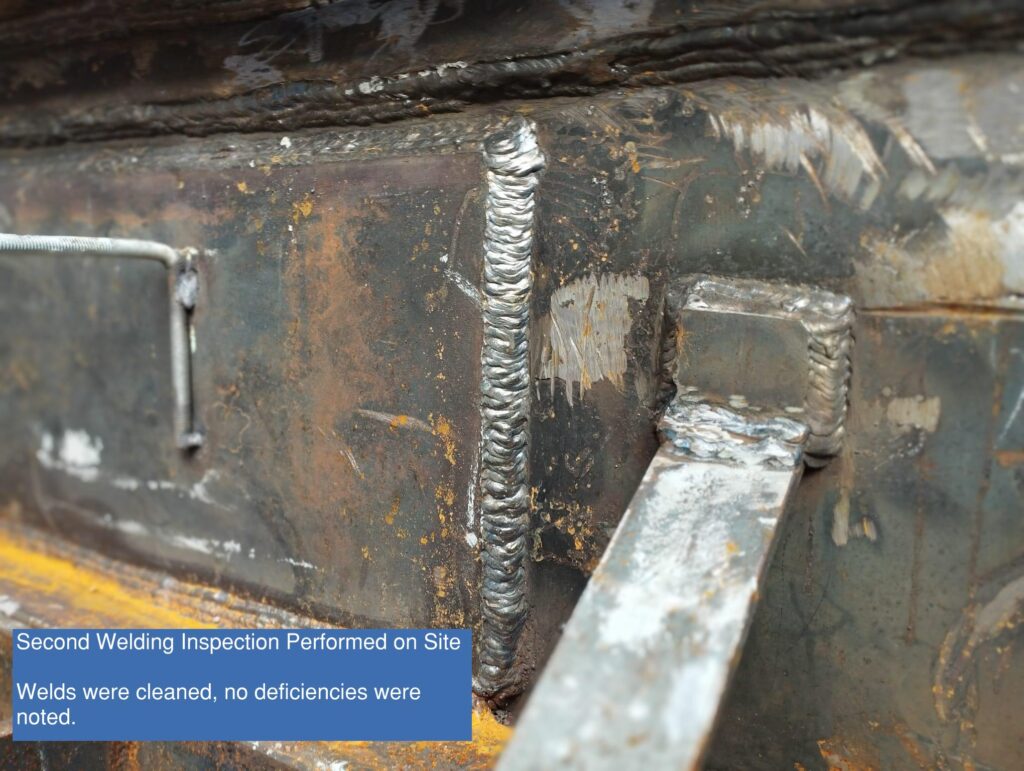The Ultimate Overview to Welding Inspection Racine for Industrial Criteria
Wiki Article
Cutting-edge Techniques to Fillet Weld Inspection and Testing: Enhancing Weld High Quality and Compliance Requirements
In the realm of welding, the top quality and stability of fillet welds play a critical duty in making certain the structural sturdiness and reliability of various commercial elements. With the constant drive for boosted efficiency and conformity with strict requirements, the exploration of ingenious approaches to fillet weld evaluation and screening has actually become necessary. As markets evolve, the traditional approaches may no longer be adequate in satisfying the demands of modern-day welding applications. By accepting cutting-edge technologies and methods, a new perspective of opportunities emerges in the realm of weld high quality analysis and adherence to compliance requirements.Advanced Non-Destructive Screening Methods
Utilizing advanced technologies, advanced non-destructive testing methods play an essential role in guaranteeing the stability and high quality of fillet welds. These approaches, such as phased array ultrasonic screening (PAUT) and magnetic fragment testing (MPT), offer comprehensive insights right into the weld's internal structure without creating any damage to the product. PAUT, as an example, utilizes multiple ultrasonic components to check the weld from different angles, providing an extensive visualization of prospective issues like absence of combination or cracks.Likewise, MPT works in spotting surface-breaking flaws by using a magnetic area and iron particles to the weld location. This method is specifically useful for identifying interruptions that may jeopardize the weld's strength. By using these innovative non-destructive screening techniques, weld examiners can precisely analyze the high quality of fillet welds, ensuring conformity with market standards and policies. The capability to detect flaws beforehand not just boosts weld top quality however also stops costly rework or failings in architectural integrity, highlighting the relevance of these ingenious screening strategies in welding assessments.
Robotics and Automation in Examination
The integration of robotics and automation has actually revolutionized the examination process for fillet welds, improving efficiency and precision in high quality assessment. Robotics supply specific control and repeatability in evaluating welds, making sure dependable and regular results. Automated systems can be set to comply with specific examination courses, making certain thorough insurance coverage of welds and decreasing the danger of human mistake.Robot evaluation systems outfitted with advanced sensors can identify and determine weld functions with high precision, providing thorough data for analysis. These systems can recognize issues such as splits, lack of blend, and porosity, enabling punctual rehabilitative actions to be taken. Furthermore, robotics and automation permit real-time data collection and analysis, supplying immediate comments to operators and assisting in fast decision-making processes.
Additionally, making use of robotics and automation in fillet weld assessment enhances general efficiency by lowering examination times and boosting evaluation throughput. By enhancing the examination process, makers can make certain weld high quality and compliance requirements are met efficiently, ultimately causing set you back savings and improved item top quality.
Utilizing Expert System for Evaluation
Man-made knowledge plays a pivotal role in enhancing the efficiency and accuracy of evaluation in fillet weld inspection procedures. AI algorithms can swiftly refine substantial amounts of information from weld evaluations, detecting defects or inconsistencies that may be challenging to determine with the nude eye - Welding Inspection Racine.Furthermore, AI systems can gain from previous assessment information, constantly boosting their ability to determine possible issues and discrepancies in fillet welds. This adaptive learning capacity enhances the overall high quality control process, reducing the likelihood of human mistake and making sure that welds fulfill the needed criteria. By incorporating synthetic knowledge into fillet weld evaluation, industries can achieve higher levels of performance, consistency, and compliance in their examination practices.
Portable Tools for On-Site Assessment
 Enhancing area inspection effectiveness, the fostering of portable tools reinvents on-site assessment processes for fillet welds. These tools provide flexibility and convenience, enabling examiners to carry out complete assessments in different areas, consisting of tough or remote settings. Mobile tools such as ultrasonic testing tools, magnetic fragment examination devices, and digital radiography systems supply real-time information and high-resolution imaging abilities, enabling quick decision-making and immediate you could look here feedback on weld top quality.
Enhancing area inspection effectiveness, the fostering of portable tools reinvents on-site assessment processes for fillet welds. These tools provide flexibility and convenience, enabling examiners to carry out complete assessments in different areas, consisting of tough or remote settings. Mobile tools such as ultrasonic testing tools, magnetic fragment examination devices, and digital radiography systems supply real-time information and high-resolution imaging abilities, enabling quick decision-making and immediate you could look here feedback on weld top quality.One significant benefit of mobile devices is their capacity to streamline inspection procedures, decreasing downtime and boosting total productivity. Assessors can quickly deliver these tools to various work websites, eliminating the need for carrying hefty machinery or parts to off-site centers. In addition, the mobility of these devices promotes cost-effectiveness by decreasing transportation expenditures and accelerating examination timelines.
Furthermore, the use of portable tools for on-site assessment promotes aggressive top quality control actions, as inspectors can promptly recognize and resolve any prospective welding defects or inconsistencies. By incorporating these ingenious technologies right into on-site evaluation techniques, welding professionals can guarantee compliance with sector criteria and boost weld top quality, ultimately leading to boosted architectural honesty and safety and security in numerous welding applications.
Assimilation of Data Administration Equipment
Having optimized on-site examination procedures with the usage of mobile devices, the next stage involves the smooth integration of information administration systems to further improve efficiency and data analysis abilities in fillet weld evaluation and testing. Welding Inspection Racine. By incorporating data management systems into the examination process, companies can improve data collection, storage space, and evaluation. This assimilation enables real-time surveillance of weld high quality, immediate identification of defects, and prompt decision-making to rectify any type of problems that might arise during the assessment procedure
The integration of information monitoring systems enables seamless communication between different stakeholders involved in the assessment process, fostering collaboration and improving general quality control actions. Ultimately, the integration of information management systems serves to raise the criteria of fillet weld assessment and testing, ensuring compliance with sector guidelines and enhancing weld quality.
Verdict
Finally, innovative approaches to fillet weld assessment and testing have actually substantially enhanced weld top quality and conformity criteria. Advanced non-destructive testing methods, robotics, automation, fabricated knowledge, mobile devices, and data monitoring systems have changed the way weld assessments are performed. By utilizing these modern technologies, industries can official statement make certain that welds meet the required quality criteria and regulations, inevitably boosting overall performance and safety and security in welding procedures.
By utilizing these innovative non-destructive testing methods, weld assessors can accurately analyze the quality of fillet welds, ensuring compliance with market standards and regulations. Mobile devices such as ultrasonic screening devices, magnetic bit examination equipment, and digital radiography systems provide real-time information and high-resolution imaging capabilities, making it possible for fast decision-making and immediate feedback on weld top quality.
Having actually maximized on-site inspection processes with the usage of mobile devices, the following stage includes the smooth linked here assimilation of data management systems to even more boost effectiveness and data analysis abilities in fillet weld assessment and testing (Welding Inspection Racine). Ultimately, the combination of information monitoring systems serves to raise the criteria of fillet weld evaluation and testing, ensuring compliance with industry guidelines and improving weld top quality
 In final thought, ingenious approaches to fillet weld assessment and screening have actually considerably enhanced weld top quality and compliance criteria.
In final thought, ingenious approaches to fillet weld assessment and screening have actually considerably enhanced weld top quality and compliance criteria.Report this wiki page